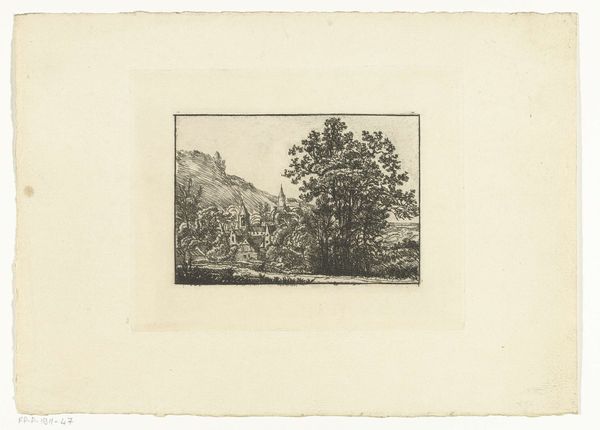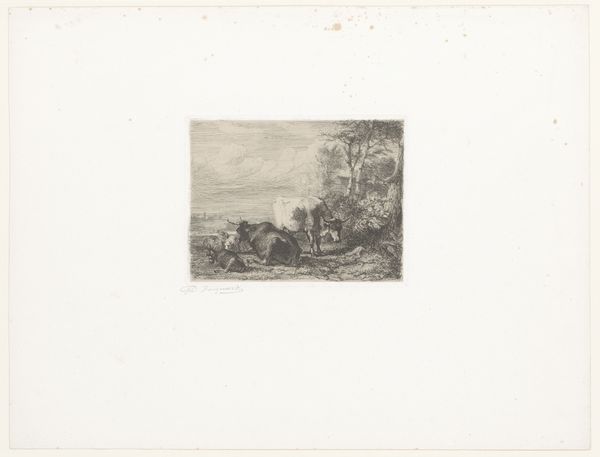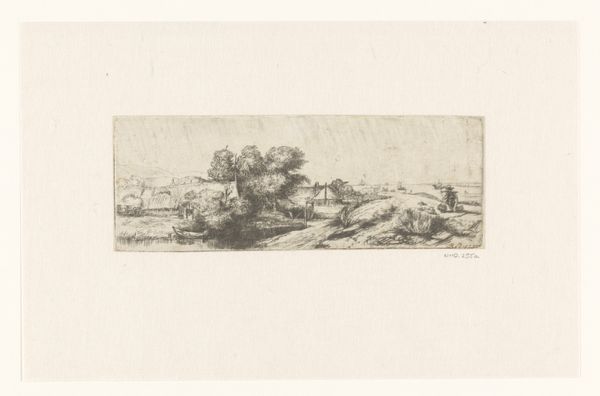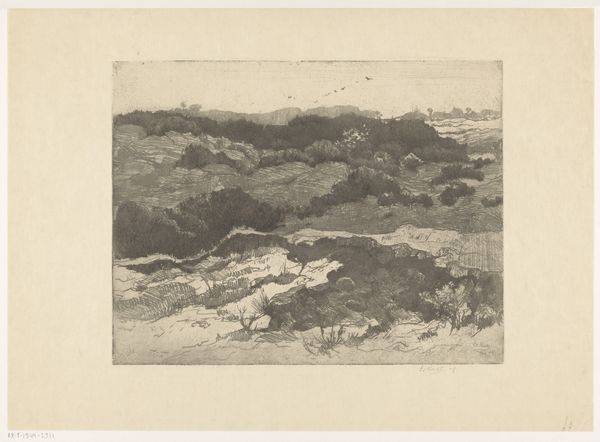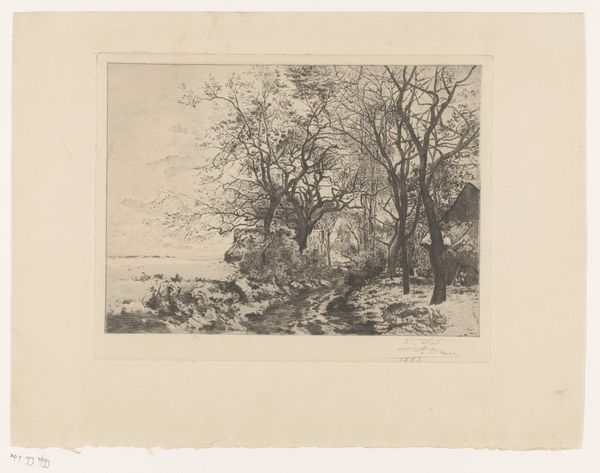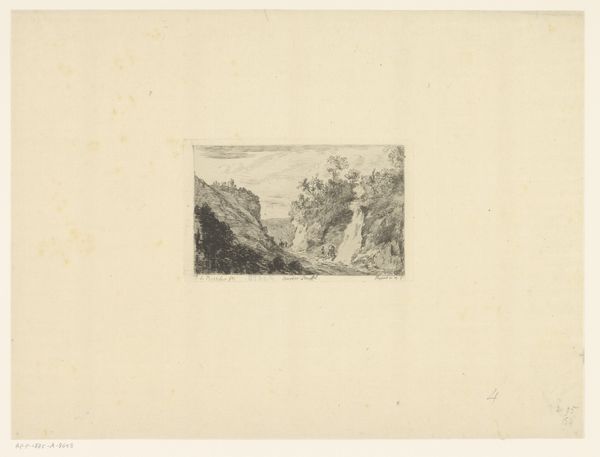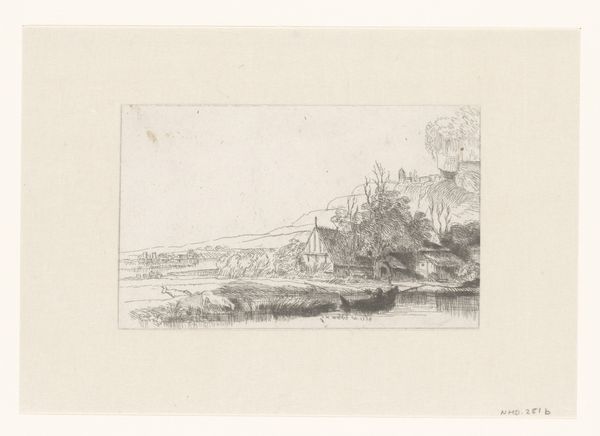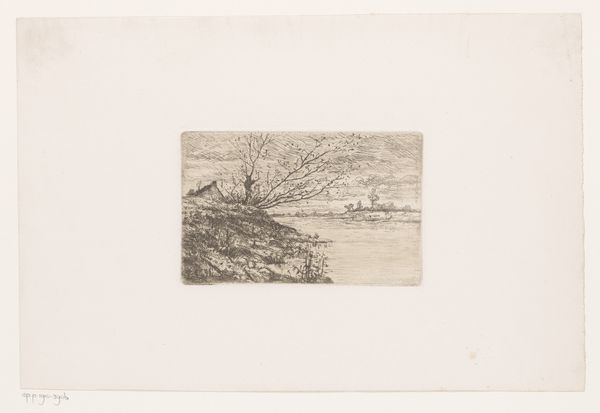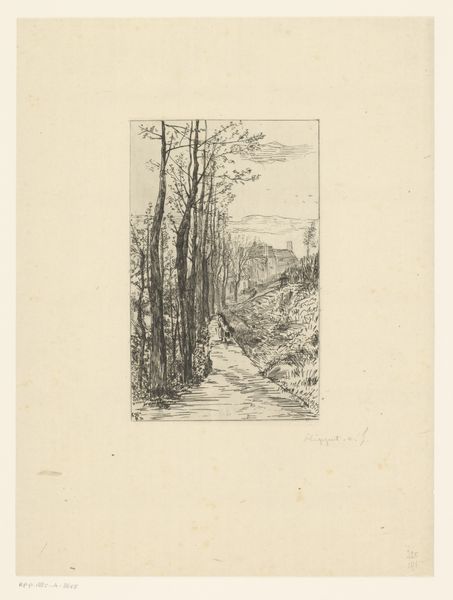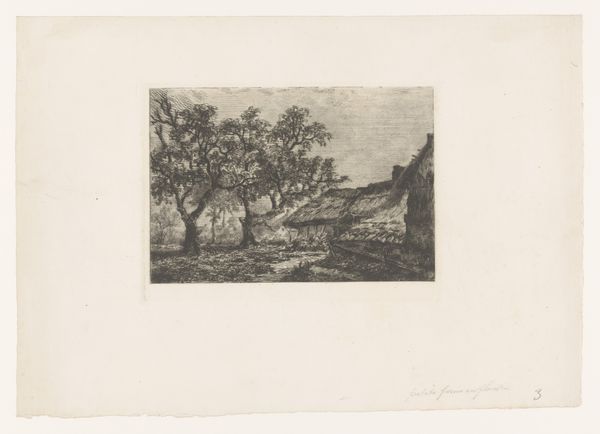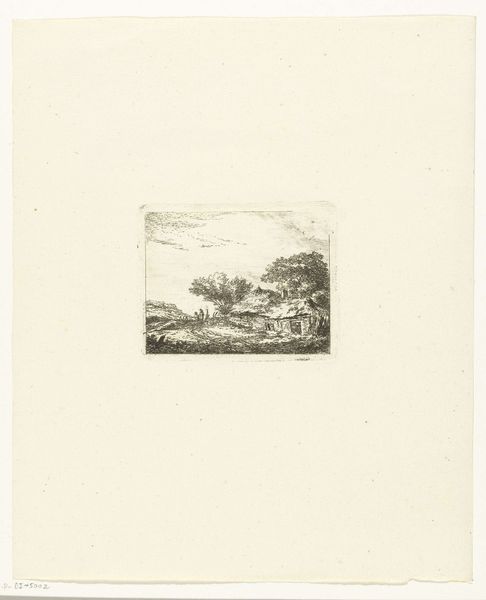
print, etching
# print
#
etching
#
pencil sketch
#
old engraving style
#
landscape
#
realism
Dimensions: height 72 mm, width 116 mm
Copyright: Rijks Museum: Open Domain
Curator: This is an etching called "Ploeg bij een schutting," which translates to "Plow by a Fence." It was created sometime between 1796 and 1849, attributed to Albertus Brondgeest. It’s currently held in the Rijksmuseum. Editor: Immediately, I'm struck by the stark stillness of it. It's not grand or picturesque in the romantic sense, more of a… quiet meditation on rural life, wouldn’t you agree? Curator: Precisely. The artist uses etching to create a dense network of lines, a web of shadows and highlights that give weight and form to the humble objects in view. I'm intrigued by how Brondgeest depicts this discarded plough. It becomes an almost symbolic object. Editor: A symbol of… weariness? The abandoned tools, the overgrown vegetation pressing in… there’s something melancholic about it all. But, then again, maybe it’s more about the cyclical nature of farming. Rest allows for future growth. Curator: It invites those reflections, doesn’t it? Look at the fence; it creates a boundary. Fences, walls, screens, are all cultural markers. Are these signifiers meant to keep something out, or in? Is the abandoned plow "out" of use? Has the field been divided, parceled, kept from the commons "in"? What lies beyond it? The mountain suggests endless, distant horizons. Editor: Oh, I love that take! This isn’t just about depicting a scene, it’s about what is, could be, and the nature of division itself. A very loaded image, really. Did viewers at the time see it this way, I wonder? Curator: Possibly! Although, perhaps, they appreciated its realism, as its a break from some ideal rural scene. Brondgeest captured the gritty realities of the Dutch countryside. We see here a landscape actively marked and changed, perhaps foreshadowing some future landscape of loss or growth? Editor: That is a strong, almost political interpretation! For me, the composition’s off-kilter quality lends to a feeling of the unresolved. Curator: Yes, but these pieces often yield up some wonderful surprises and avenues for thinking. The plow, as symbol, takes a far broader place in that context! Editor: Right, I will walk away and think about the hidden signs of the field more! I may never look at another plow in the same way again!
Comments
No comments
Be the first to comment and join the conversation on the ultimate creative platform.

